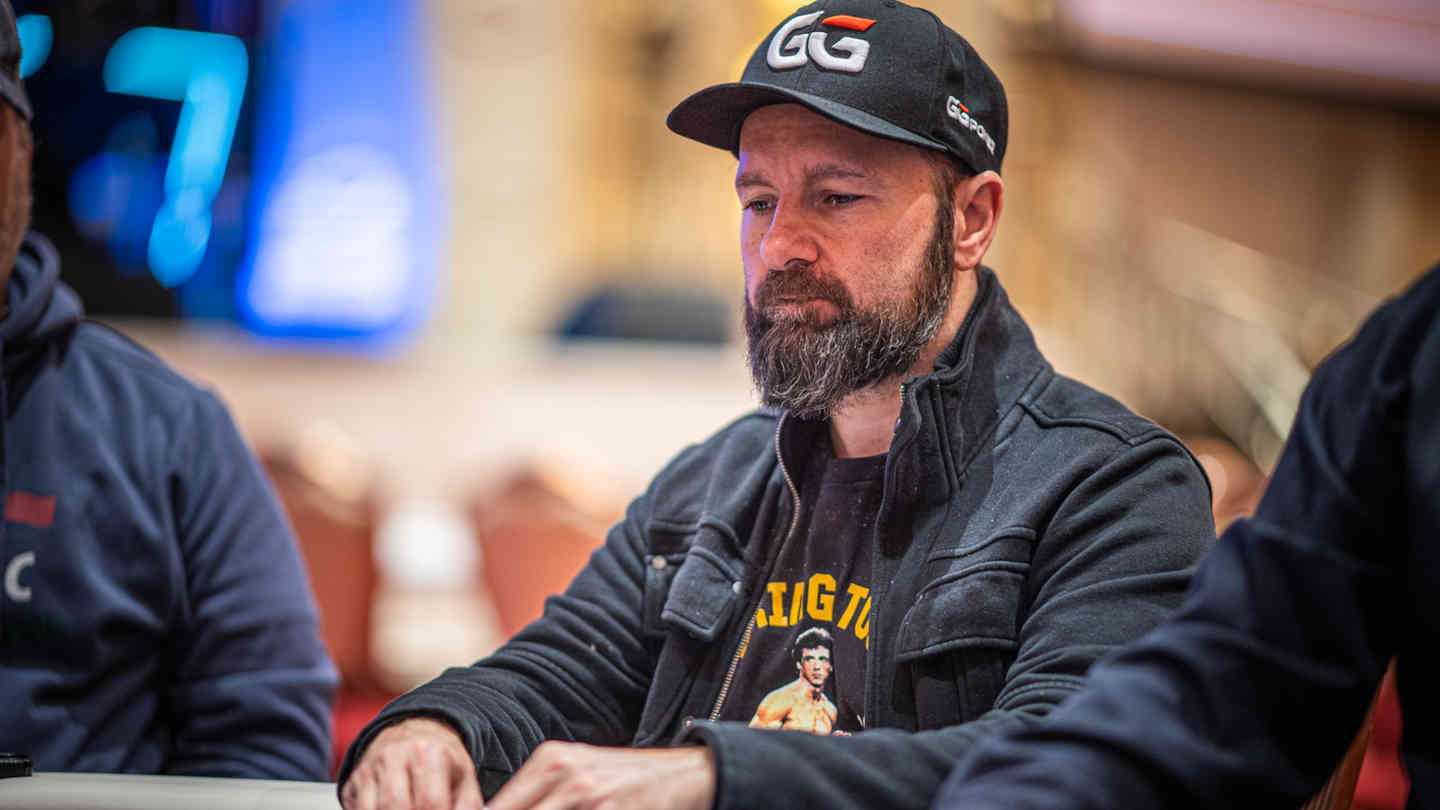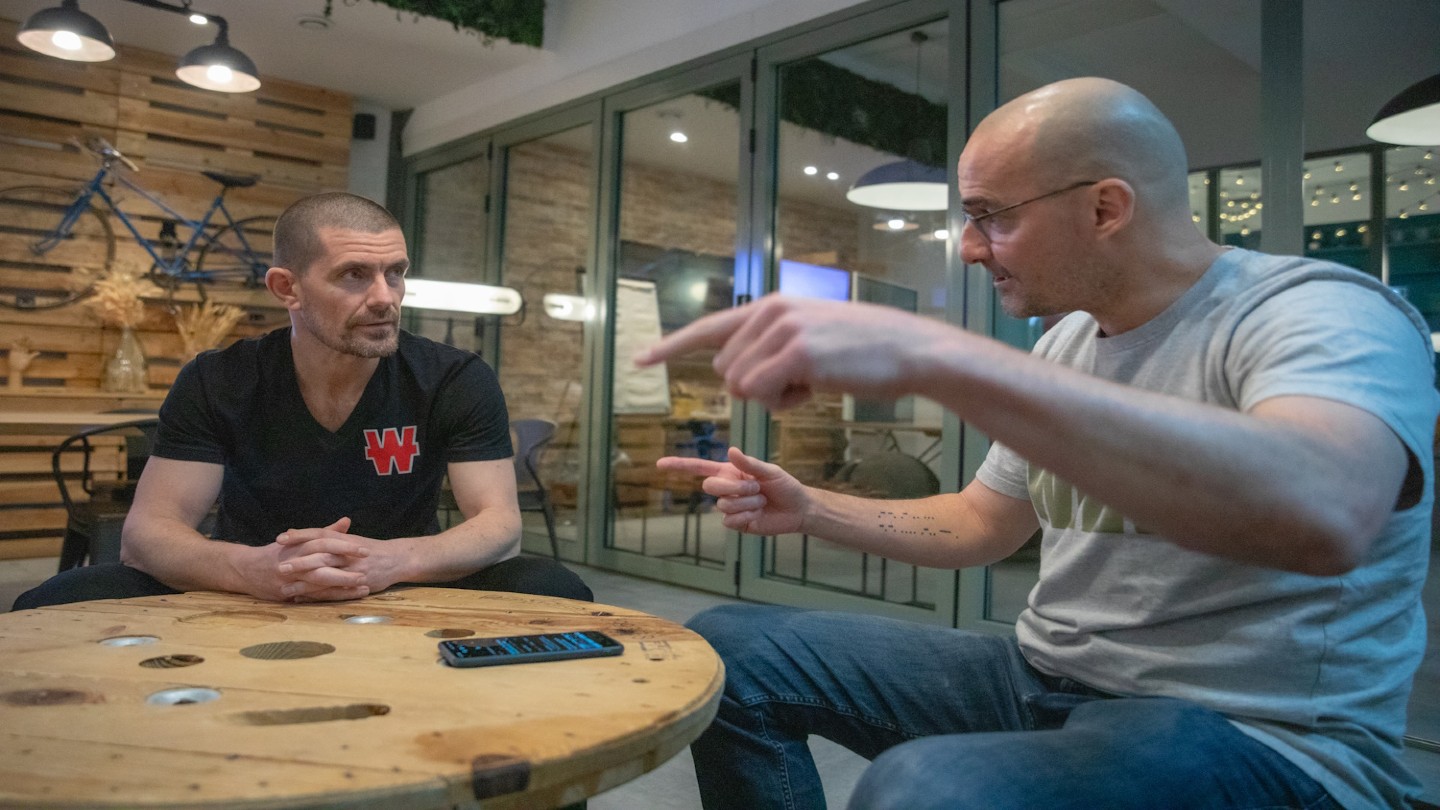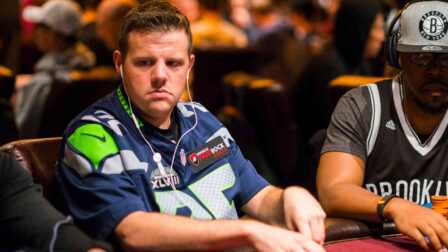How to Crush Your Opponents in Multiway Pots
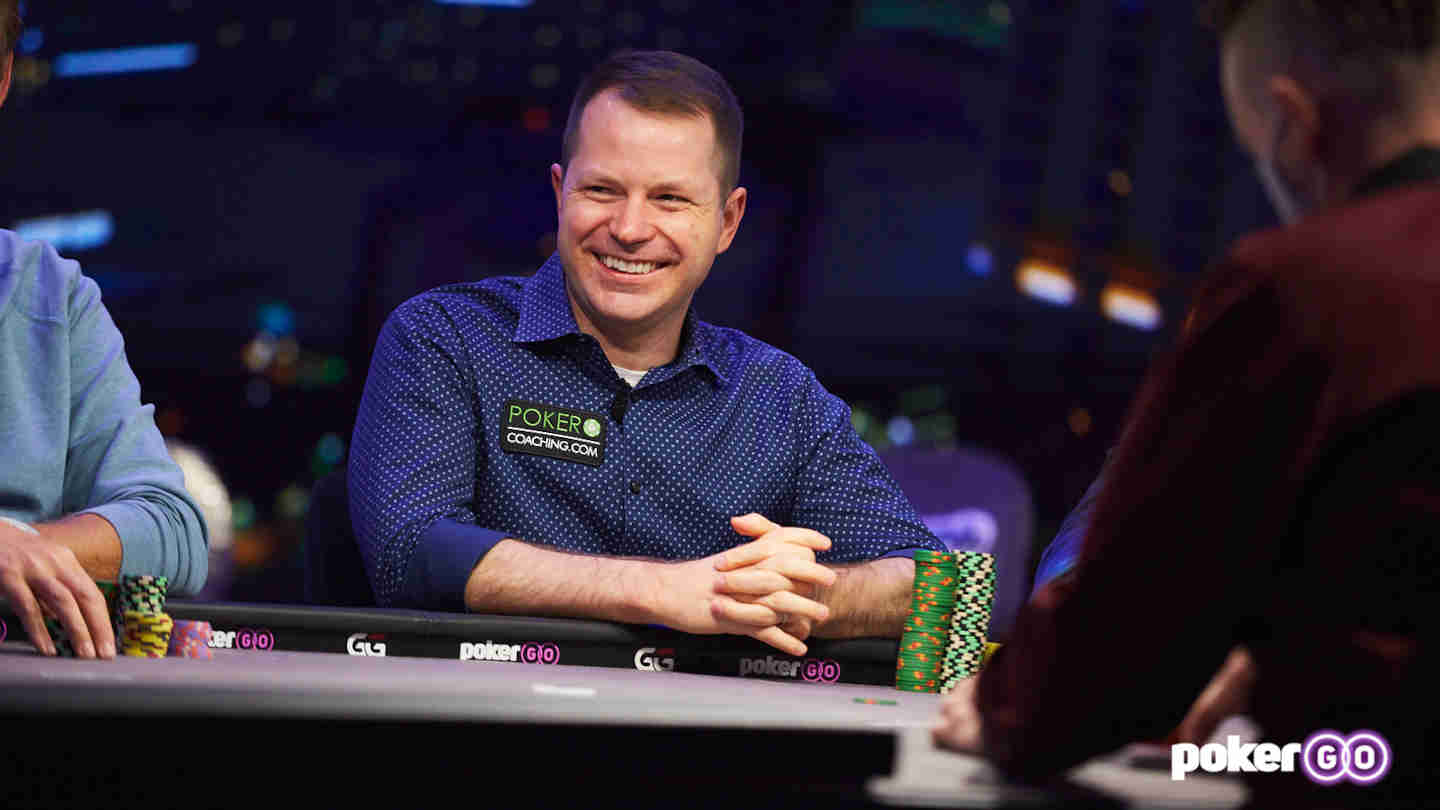
6 minutes
Last Updated: February 12, 2024
If you want to increase your edge at the tables even further, make sure to check the Pokercoaching training site.
…
In this article, we'll focus on multiway pots and the best approach to these scenarios by covering some general strategy concepts first and then looking at a few concrete hand examples.
When comparing multiway and heads-up scenarios, there are quite a few differences that you need to understand and consider when tailoring your strategy.
Of course, we're still sticking to the same fundamental ideas, such as the nut and range advantage. They remain our main guidelines when facing multiple opponents, but we have to put them in the correct perspective.
–
Main Considerations in Multiway Pots
When talking about the range and nut advantage in multiway pots, the first thing to understand is that both will be significantly reduced.
The GTO strategy dictates that you'll never bet 100% in these scenarios. There are certain spots in which you'll even always want to check as a preflop raiser, and we'll look at one of them a bit later.
When betting, a smaller sizing is preferred, usually around one-third of the pot, as opposed to heads-up situations, where two-third and even larger bets are often the way to go.
When you're facing aggression in these scenarios, your minimum defense frequency will be a lot lower as well. The defense frequency is now shared by all players in the pot, so you'll have to fold many hands that you'd want to continue with in HU pots, like overcards with a backdoor flush draw.
The idea of the “cleaning up” equity also becomes more pronounced. Certain hands that you'd be content to check back in HU pots become mandatory bets as, with multiple opponents in a hand, there are many more random overcards that can easily outdraw you if you allow a free card but will fold to any aggression.
Finally, when it comes to bluffing, you shouldn't have any no-equity bluffs in these spots.
Multiway Pots: Playing as the Aggressor
With these important ideas and considerations in mind, let's now look at a few hand examples demonstrating some frequent multiway spots and looking at some solver numbers.
The first hand we'll look at is pocket kings. We open from the lowjack for the standard 2.2 raise (playing 40 big blinds deep) and get called by the button and the big blind player. The flop comes Q♠3♦2♥, and the big blind checks to us.
This is a spot in which most players bet by default, but that's actually wrong according to the GTO strategy. We should be checking here with the view of putting in a check-raise or playing the turn if the button checks behind.
To understand why this is the case, we need to look at what very strong poker hands we can have here vs. the hands our opponents can have. Our top range is quite small, consisting of pocket aces, kings, queens, AQ, KQ, and QJ (which isn't really all that strong).
Our opponents, on the other hand, have pocket 2s, 3s, AQ, and KQ, and the big blind player can also have a hand like two pair with a suited queen and baby card, considering great preflop odds.
So, the fact that we don't have the nut advantage in this spot, combined with the fact that our hand isn't very vulnerable on this board texture, results in this being a mandatory check.
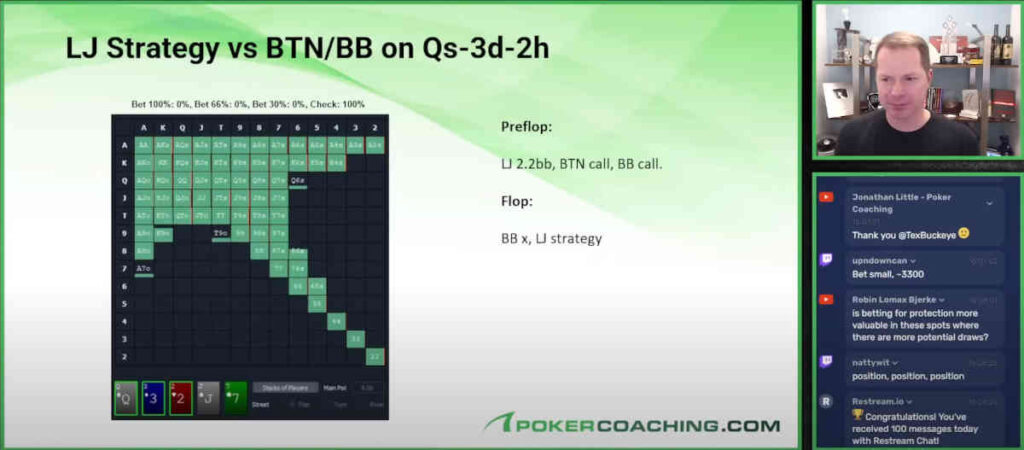
When the turn comes J♠ and the big blind checks to us, this is the time to start betting. With all the action we've seen, our opponents' ranges are pretty capped, and the board has become more coordinated, so we can bet around two-thirds of the pot for both value and protection.
Playing Pocket 9s Multiway
Let's now look at the same scenario but with a different hand and board texture. We open with 9♠9♥, face two callers, and proceed to the flop of J♣8♥6♦.
This is a much more dynamic board that will change on many turn cards. On these types of textures, we want to bet more frequently, and the GTO suggests betting about 34% of the time and checking about 66%.
When it comes to sizing, it is a mixed strategy of 2/3 and 1/3, but you can simplify things and just use the 1/3 sizing for all hands that you want to bet with on this board texture, as shown below.
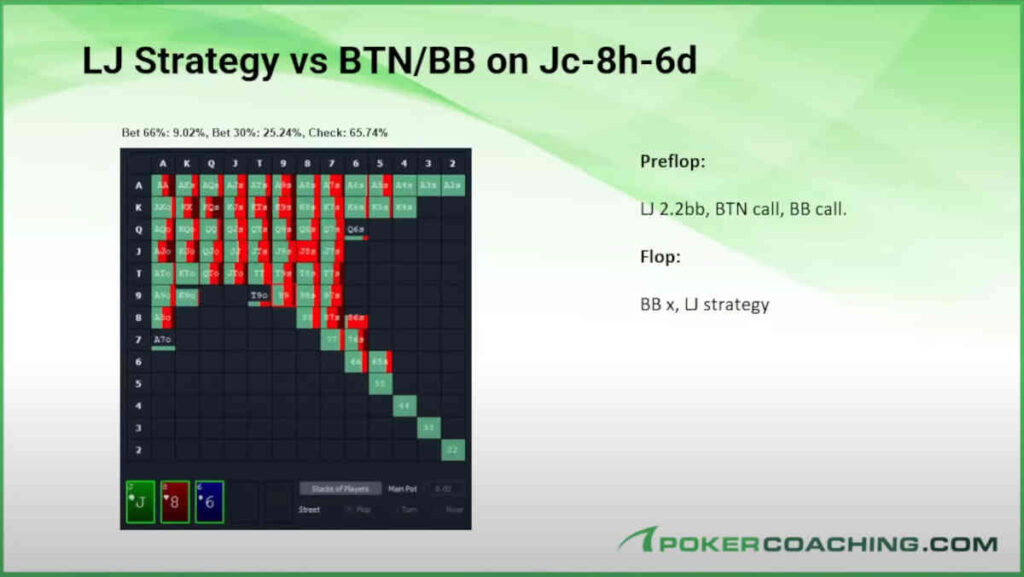
This is the spot where we'll be a decent favorite overall, ahead of our opponents' ranges with a nice nut and range advantage.
When we compare this to a HU scenario, we are using much bigger sizing and checking very infrequently against one player who's out of position.
When the opponent is in position, we will be using bigger sizing but checking at a much higher frequency, with a strategy similar to that in multiway pots. The biggest difference is that, in heads-up pots, some vulnerable hands become checks because they're likelier to stay ahead on turns and rivers against a single opponent.
Facing Aggression in Multiway Pots
Let's now look at an example where we are facing aggression in a multiway scenario and how to handle those situations.
We open A♠Q♣ and once again get two callers in the button and the big blind. The flop comes A♥K♠5♣, and after the big blind checks, we decide to check behind, as our hand isn't very vulnerable.
The action gets to the button who bets one-third pot, and the big blind calls. What should we do here?
In heads-up pots, when facing small bets out of position, you'll be inclined to raise to prevent your in-position opponent from realizing their equity. The same strategy applies here.
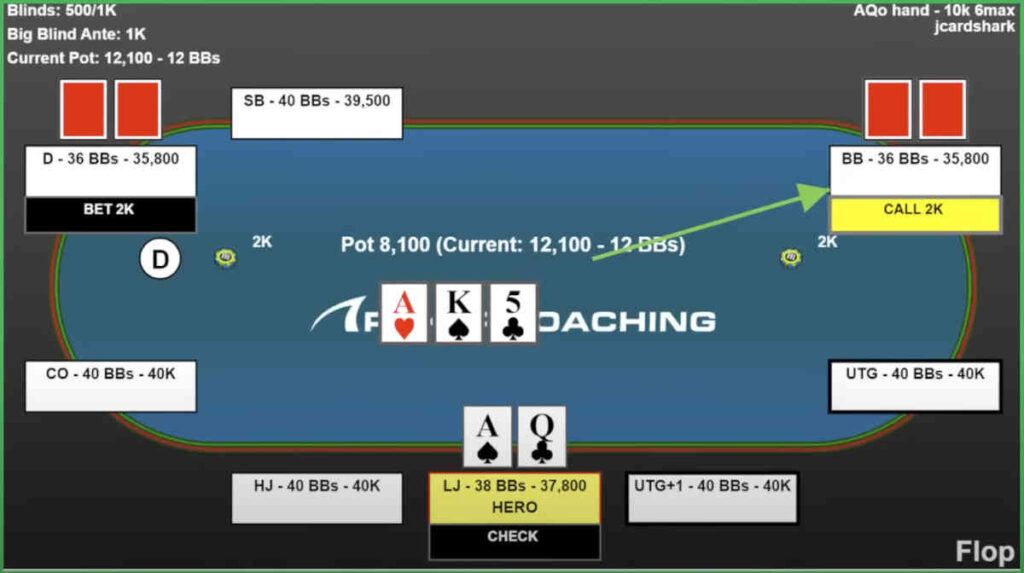
We'll be check-raising our good aces alongside some bluffs, such as gutshot straight draws, bottom pairs that can improve to two pair that'll almost always be good, etc.
If we look at the solver, we see that we are raising down to like A9 for value. For bluffs, we're raising our gutshots but also hands like KJ, K9, and K8 some of the time.
Interestingly enough, weaker hands like K7 and K6 prefer to call. The reason for this is that when we improve to two pair with a hand like K7, we'll almost always be good. This isn't the case with KJ, as our second pair will improve a lot of the hands our opponents can have.
Crushing Multiway Pots: Summary
Playing multiway pots can be tricky, and there is a lot to learn about these spots. As you can see from some examples in the article and in the video, some hands that you'd be naturally inclined to bet with become checks, and some natural-looking checks turn into bets.
It takes time and practice to adopt all these adjustments, but try and keep in mind the following key points from this article:
- There are no 100% bet spots in multiway pots
- Your minimum defense frequency is decreased significantly
- Smaller bet sizing is usually the preferred option
- Avoid no-equity bluffs and bet more for equity protection
Even seasoned pros make mistakes in these spots, so don't be too hard on yourself if you find some misplayed hands during your reviews. Keep learning and practicing, and these numbers will improve with time.
But at the end of the day, the process of studying poker never really ends if you want to become and stay a winning player!








